Retro Replay Review
Gameplay
At its core, GP Rider delivers an arcade-style motorcycle racing experience centered on the 15 official tracks of the 1989 Motorcycle Grand Prix season, plus one dedicated Arcade track. Players can dive right into a single, fast-paced heat on the Arcade course or tackle the full breadth of the season in Grand Prix mode. Tournament mode sits in between, allowing you to pick and choose any number of circuits you’d like to conquer, from just the extra Arcade track up to all 15 real-world venues. This structure gives both casual and hardcore players a way to customize their own racing calendar, whether they crave a quick sprint or a lengthy tour of Europe, Asia, and beyond.
Races always follow the same two-stage format: Qualify, then the Race. Qualifying sets your grid position, and the main event pits you against 15 competitors (including CPU-controlled Wayne when you’re solo) over a variable number of laps determined by track length. The split-screen presentation remains even in single-player, with Wayne taking the opposite half of the screen. He behaves unpredictably—sometimes he posts blistering times, other times he makes mistakes—adding an element of rivalry that keeps you on your toes.
Weather plays a strategic role: every track can be raced dry or wet, though Arcade mode locks you into dry conditions. Your tire choice must match the forecast, and since the weather can shift between Qualify and Race, you might be scrambling to swap from slicks to rain tires at the last minute. Add to that the ticking fuel gauge (which counts down lap time rather than liters) and the risk of running “Out of Fuel” before the finish line, and you’ve got a sense of pressure that lifts GP Rider above simpler time-attack click-fest racers.
Beyond track selection and weather, you can fine-tune your bike before each run. In Arcade mode, options are basic—Automatic or Manual gearbox paired with High versus Low gearing. Tournament and Grand Prix open up engine choices (Lean for efficiency, Medium for balance, Thirsty for top speed at the cost of lap time), plus the familiar gearing options and tire compounds suited for wet or dry tarmac. Learning when to favor raw power over fuel economy, or grip over velocity, becomes a satisfying puzzle that rewards experimentation.
Graphics
GP Rider’s visuals are unapologetically rooted in late-’80s arcade hardware. The tracks are rendered with flat, overhead-following curves and straightaways, while riders are depicted as small but recognizably detailed sprites. Colors pop off the screen, whether you’re blazing down a sunlit coastal circuit or navigating damp hairpin turns under overcast skies. Although there’s no 3D polygonal modeling, clever sprite scaling and parallax scrolling lend a convincing sense of depth and speed.
Weather transitions are handled with a simple yet effective overlay of rain droplets and darker hues, transforming a bright circuit into a slick, gray-toned battlefield. The wet track texture doesn’t change dramatically, but the visual cues—puddles, reflective surfaces, and the bike’s spray effect—signal the altered grip level clearly. These details, while modest by modern standards, are charming reminders of how arcades achieved immersion before GPUs ruled the world.
Animations are smooth for their era: riders lean authentically into corners, exhaust flames flicker beneath the bike, and the fuel gauge ticks down in real time. Split-screen mode divides the action cleanly, though narrower screens can feel cramped on home displays. On the upside, the UI remains unobtrusive, leaving most of the viewport dedicated to the track and your competitors—exactly where it needs to be for fast reflex racing.
Ultimately, GP Rider’s graphics won’t compete with contemporary racers, but they age gracefully as nostalgia-fuel for arcade fans. The bold color palette, crisp sprite edges, and straightforward HUD combine to present a retro aesthetic that’s still easy on the eyes and quickly communicates essential information during a high-speed duel.
Story
GP Rider doesn’t offer a traditional narrative campaign—its “story” is the annual drama of the 1989 Motorcycle Grand Prix season itself. You’re not questing through a fantasy realm or saving a princess; you’re lining up your bike on famous circuits from Jerez to Suzuka, chasing the championship trophy, and managing every decision that swings your lap time by fractions of a second.
That lack of a scripted plot is by design. Instead, the game crafts its drama through on-track rivalries, most notably with the CPU character Wayne. When you’re alone, Wayne occupies the top half of the split screen, and his unpredictable performance feels like a living storyline: one race you might humiliate him on the final lap, and the next he squeaks past you at the last turn. Each twist and turn writes its own mini-epic.
Between races in Tournament and Grand Prix modes, you see only minimal text indicating your accumulated points and upcoming venue. Yet this bare-bones presentation reinforces the core appeal: you are the story, and every pole position, every crash in the wet, every fuel-time scramble becomes part of your personal legend. For fans of pure racing simulation—arcade-lite style—this approach feels liberating rather than empty.
If you’re seeking character arcs, cutscenes, or voiced dialogue, GP Rider deliberately withholds them. What you get instead is a blank canvas where your success or failure defines the narrative, lap by lap, turn by turn.
Overall Experience
GP Rider stands out as a distilled arcade motorcycle racer that balances approachability with enough strategic depth to keep you coming back. Its multiple modes cater to both short play sessions and long championship challenges, while the track roster remains diverse enough to prevent monotony. Even after decades, the game offers a satisfying loop of qualification sprints, high-speed cornering, and split-second decision-making in response to weather and fuel constraints.
The split-screen mechanic may feel unusual if you’re accustomed to one-player fullscreen experiences, but the relentless presence of Wayne ensures that you’re never truly racing solo. That AI competitor adds tension and unpredictability, making each discipline—from a quick Arcade heat to the marathon 15-race Grand Prix—a fresh test of skill.
On the flip side, those expecting cutting-edge visuals or a deep narrative will find GP Rider’s retro presentation limited. Controls are straightforward but demand precision, and the fuel-as-time system can feel punishing until you adjust your pace. However, for enthusiasts of classic arcade racers or anyone looking for a bite-sized yet strategic motorbike challenge, GP Rider remains a gem worth exploring.
Whether you’re chasing nostalgic memories or discovering this 1989 title for the first time, GP Rider delivers an unpretentious, fulfilling racing experience. Its blend of track authenticity, light tuning options, and arcade thrills makes it a standout entry in the two-wheeled racing hall of fame.
 Retro Replay Retro Replay gaming reviews, news, emulation, geek stuff and more!
Retro Replay Retro Replay gaming reviews, news, emulation, geek stuff and more!
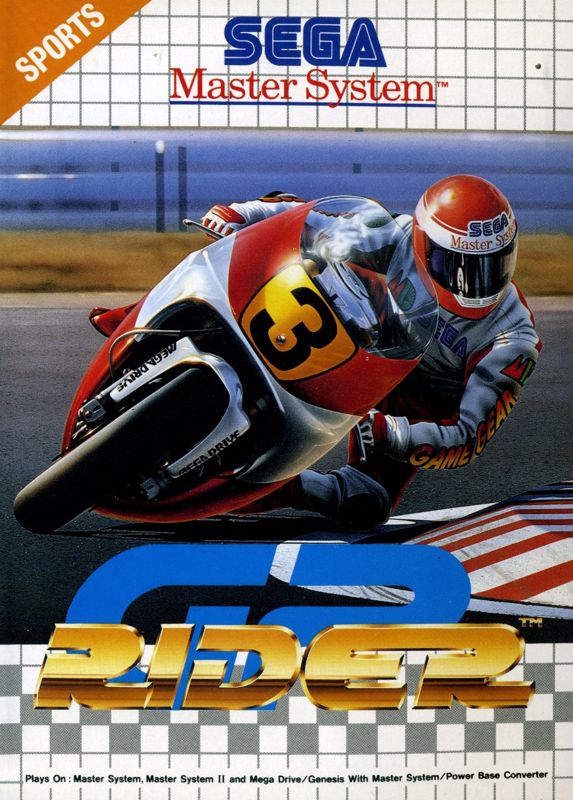
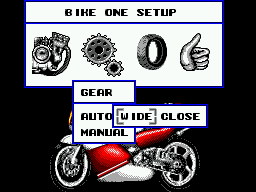
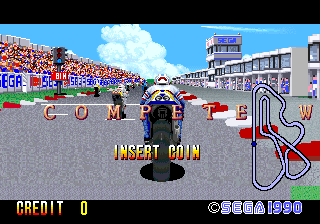
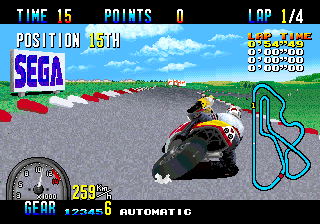
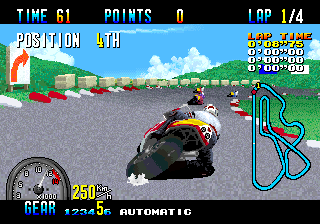
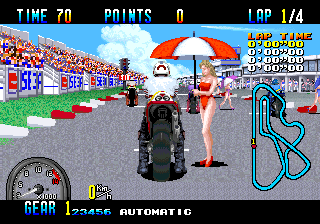



Reviews
There are no reviews yet.